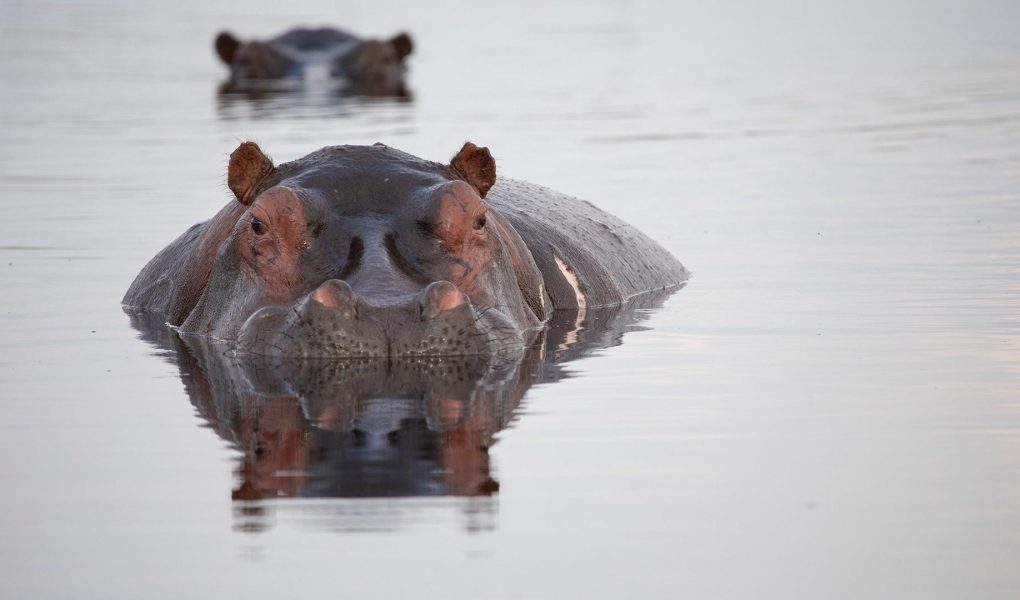kimzolciakwedding.com – The hippopotamus (Hippopotamus amphibius), often shortened to hippo, is a large, semi-aquatic mammal native to sub-Saharan Africa. Despite their herbivorous diet, hippos are considered one of the most dangerous animals in Africa, known for their aggressive behavior and powerful build. This article explores the complex world of the hippopotamus, delving into their biology, behavior, social structure, ecological role, and the challenges they face in a changing world.
Taxonomy and Physical Characteristics: Adaptations for an Aquatic Lifestyle
Hippos belong to the family Hippopotamidae, which also includes the pygmy hippopotamus. They are closely related to cetaceans (whales, dolphins, and porpoises).
Key physical characteristics of hippos include:
- Large Size and Barrel-Shaped Body: Hippos are among the largest land mammals, with males weighing up to 3,200 kg (7,100 lb) and females weighing up to 2,600 kg (5,700 lb). Their barrel-shaped body is well-suited for an aquatic lifestyle.
- Short Legs and Large Head: They have short, stocky legs and a large head with a broad muzzle.
- Eyes, Ears, and Nostrils on Top of the Head: Their eyes, ears, and nostrils are located on the top of their head, allowing them to see, hear, and breathe while mostly submerged in water.
- Thick Skin and Sparse Hair: They have thick, nearly hairless skin that helps protect them from the sun and abrasions. They secrete a reddish oily substance, sometimes referred to as “blood sweat”, which acts as a sunscreen and antibiotic.
- Large Teeth: Hippos have large canine teeth and incisors, which they use for defense and combat. Their incisors grow continuously and can reach impressive lengths.
Behavior and Social Structure: Aquatic Socialites
Hippos are highly social animals that spend much of their time in water.
- Social Groups: They live in groups called pods, which can consist of up to 30 or more individuals, typically made up of females and their offspring, led by a dominant male.
- Territoriality: Dominant males establish and defend territories in the water, which include stretches of river or lake shoreline.
- Aggressive Behavior: Hippos are known for their aggressive behavior, particularly when defending their territory or protecting their young. They are responsible for more human fatalities in Africa than any other large mammal.
- Vocalizations: They communicate using a variety of vocalizations, including grunts, bellows, and snorts, which can be heard over long distances.
- Semi-aquatic Lifestyle: They spend most of the day in water, emerging at night to graze on grasses and other vegetation.
Ecological Role: Shaping Riverine Ecosystems
Hippos play a significant role in shaping the ecosystems they inhabit.
- Nutrient Cycling: Their dung fertilizes the water, providing nutrients for aquatic plants and supporting the aquatic food web.
- Habitat Modification: Their movements in and out of the water can create pathways and alter the vegetation along riverbanks.
- Grazing Impact: Their grazing can have a significant impact on terrestrial vegetation, particularly in areas adjacent to water bodies.
Threats and Conservation: Facing Habitat Loss and Human Conflict
Hippos face a number of threats that impact their populations:
- Habitat Loss and Degradation: Habitat loss due to human development, agriculture, and dam construction is a major threat.
- Human-Wildlife Conflict: Conflicts with humans arise when hippos raid crops or come into contact with human settlements.
- Poaching: Hippos are poached for their meat and ivory tusks.
- Drought: Droughts can reduce water levels and concentrate hippo populations, increasing competition for resources and the risk of disease outbreaks.
Conservation efforts are crucial for the long-term survival of hippos:
- Habitat Protection: Establishing and managing protected areas, such as national parks and reserves, is essential for conserving hippo habitats.
- Community Conservation: Working with local communities to promote coexistence and reduce human-wildlife conflict is crucial.
- Anti-Poaching Measures: Strengthening law enforcement and implementing anti-poaching patrols are essential for protecting hippos from illegal hunting.
- Monitoring and Research: Ongoing research and monitoring are needed to understand hippo populations, behavior, and the threats they face.
Conclusion: Balancing Coexistence and Conservation
Hippos are fascinating and ecologically important animals that play a vital role in African ecosystems. However, they face increasing pressure from habitat loss, human-wildlife conflict, and other threats. Effective conservation strategies are essential to ensure the long-term survival of these river giants. Balancing the needs of local communities with the conservation of hippos is crucial for achieving coexistence and ensuring that these iconic animals continue to thrive in their natural habitats. Protecting hippos is not just about preserving a species; it’s about safeguarding the health and biodiversity of the African riverine ecosystems they inhabit.
